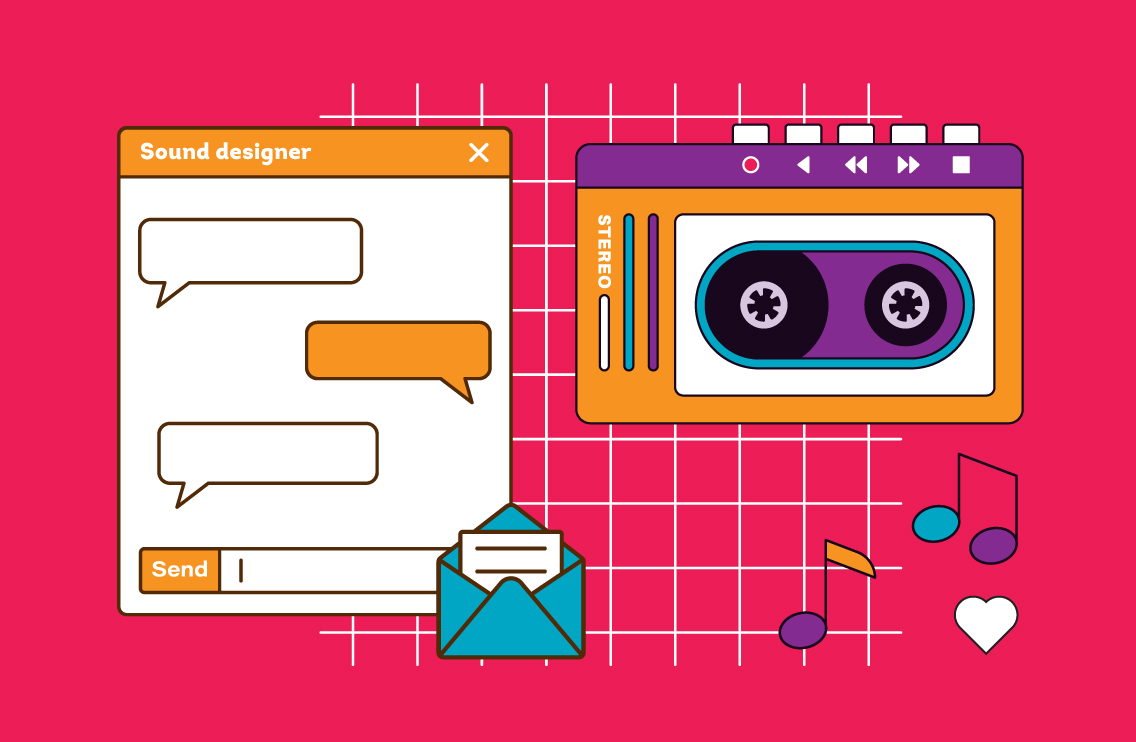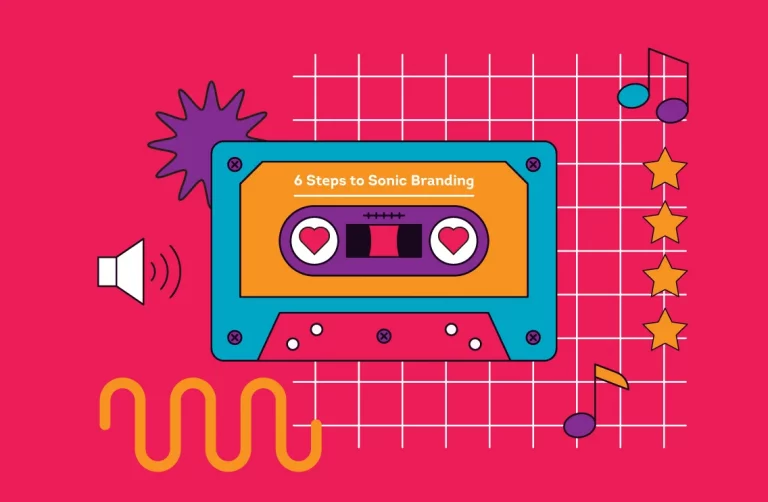Ask most marketers what sonic or sound branding is and chances are they know of this form of marketing or have heard of it. The rise of smart speakers like Amazon’s Echo and Google Nest have accelerated the adoption of sonic branding. Yet, most brands today do not have a sonic brand; and if they do, it is likely limited in media, existing only in the form of either radio ads or television commercials. While no one can dispute the importance of sonic branding, the jury is still out on whether brands are equipped enough to harness the extensive emotional and exclusive value of sonic branding done right.
In a previous blog post, we discuss the science behind what makes sonic branding so powerful and effective. They are mnemonic devices aiding memory making and recall, that connects people with brands as much as visual elements. How then can we as marketers and creatives start laying down the track for a brand’s journey into sonic branding? Read on to learn the steps we can take to create a fuller brand experience through sound.
Step 1: Conduct research

Any worthwhile branding and marketing endeavour should have their customers in mind, and sonic branding is no exception. In an era where data is king and user centricity is, uh, another king, research is the tool that will tell any marketer where their brand stands in the eyes of their customers. From a design thinking perspective, this is where we take a deep dive into our audience’s motivations and preoccupations. This is the critical step that determines not only how a brand’s identity is shaped but also where it is experienced. It is the bedrock that the brands’ marketing efforts are built upon.
When viewed with a sonic branding lens, research will tell marketers the sound, mood and tone that best resonate with their audience. Moreover, studying data on customer media consumption habits will also highlight the best touch points where their sonic branding will hit the right notes.
Step 2: Define your brand’s identity

Sonic branding is, after all, a form of branding. This means it is an expression of branding through sound. In order to do this effectively and consistently on brand, it is crucial to define a brand’s identity. This will help determine the personality, values and archetype behind the brand’s sound. Does your brand’s quirky personality require an equally kooky sound? If innovation is a value that your brand prizes, then doesn’t it mean that it should sound as such?
Additionally, brand guides have set the guidelines and rules creatives need to follow when using visual brand assets. Creating tips on using brand sounds guides and empowers both marketers and creatives in creating communications. Resulting in brand assets that are consistent and effective.
Step 3: Develop a sonic branding strategy

Now that you know your audiences, identified touch points and have defined your brand, it’s time to incorporate it into your customer experience. This is also where your storytelling flair comes into play. Imagine the customer journey and how they experience your brand. Does your brand have an animated logo on videos that could be jazzed up with an audio logo? Are there micro-interactions on your website or app that could be made even more memorable through an audio mnemonic? Consider how McDonald’s ends videos with that 5-note “I’m lovin’ it” or how the Apple sound greets users every time a device is switched on. These are best examples that brands, and we as marketers, should emulate when strategising.
Step 4: Work with a sound designer

Working off the research, identity and strategy, it is important to engage a sound designer that best suits the requirements. A key component to the sonic branding team, the sound designer should collaborate closely with the agency and brand teams in composing a signature sound. Similar to creatives specialising in illustration, 3D artists and the like, sound designers have different specialties as well. Some may be well regarded as jingle composers–creating catchy tunes and memorable lyrics used in advertisements. Some others are sound engineers, experimenting in combining code and non-traditional instruments to come up with a unique sound.
A good example of this is Singapore Airlines. Working closely with an agency, they engaged a sound designer who took their iconic batik motif and used that to create an actual musical instrument used in their sonic branding. The master sound was then used in part or in full, across many touch points in their customers’ journey. The music was used in their advertisements, to lounge music piped through boarding gates and even on their hotline.
Step 5: Testing and optimising sonic branding

The advantage of living in a hyper-connected, always-on, data-driven world is that brand teams can collate customer sentiments in real time. Social listening tells you what people are saying about your brand new sound. Engagement data, likes, shares and clickthroughs all provide valuable information if your customers are lovin’ it or are changing their tune. Additionally, focus groups can give good qualitative feedback. Armed with these insights, both marketers and creatives can continue optimising. This results in a brand sound that is consistent with the brand identity and resonates with audiences.
Step 6: Evolve, localise, customise

Finally, let’s take a page out of Mastercard’s branding playbook. Brands looking to evolve their sonic branding further can certainly look into customising their signature sounds. It could be through using native instruments in their local markets. Have a presence in Latin America? Why not remix your sonic branding with Latin beats? Thinking of expanding into Indian markets? Imagine your audio signature played on a sitar. This are just some of the ways where customisation and localisation can enrich a sonic brand experience.
The final notes on sonic branding
While it’s true that sonic branding offers an exciting and engaging new experience for consumers, it is more important to define a brand’s identity first. Developing a brand’s persona, values and personality lends to a more consistent expression of a brand through sound. Then, using storytelling and insights gathered from research, guides marketers and creatives alike on where and how to use sonic branding.
A distinct sonic identity is another aspect of a brand’s expression, similar to a logo. Situations where it is truly effective are where visual branding is less effective, such as on radio, Spotify or in crowded retail environments. It is also useful for us to remember to leverage the emotional impact of using audio in branding. And to top it all off, continue to optimise, localise and customise. This ensures that any sonic branding efforts continue to engage well and create fuller brand experiences for customers. The end result? Improvement in brand recall and (hopefully!) increased sales over time. Certainly music to any brand’s ears, don’t you think?






